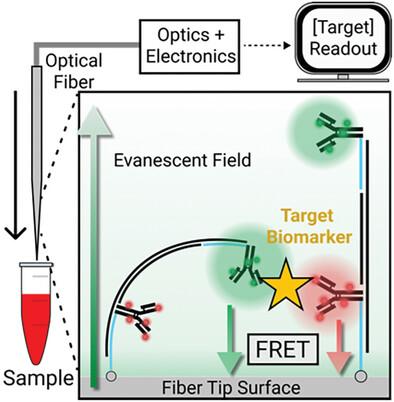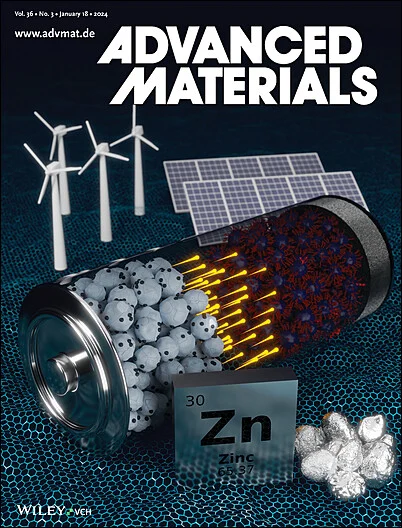Rapid, Sensitive Detection of Protein Biomarkers in Minimally‐Processed Blood Products with a Monolithic Sandwich Immunoassay Reagent
IF 27.4
1区 材料科学
Q1 CHEMISTRY, MULTIDISCIPLINARY
引用次数: 0
Abstract
For more than fifty years, the enzyme‐linked immunosorbent assay (ELISA) serves as the gold standard for protein biomarker detection. However, conventional ELISA requires considerable sample preparation including reagent addition, incubation, and washing steps, limiting its usefulness at the point‐of‐care. In this work, the “instant ELISA” (fluorophore‐linked immunosorbent assay) biosensor that can measure protein biomarkers in the picomolar range within 15 min in undiluted plasma or serum with no sample preparation is described. The sensor leverages a synthetic reagent termed the “monolithic dual‐antibody clamp” (MDAC) which preserves the specificity, sensitivity, and generalizability of an ELISA, but produces a fluorescence signal as two surface‐tethered antibodies form a “sandwich” by binding to two distinct epitopes on the target. As exemplars, picomolar quantification of tumor necrosis factor alpha (TNFα) and monocyte chemotactic protein (MCP)‐1, the latter of which is a useful prognostic indicator of cytokine release syndrome in patient plasma samples during chimeric antigen receptor T cell therapy are demonstrated.

求助全文
约1分钟内获得全文
求助全文
来源期刊

Advanced Materials
工程技术-材料科学:综合
CiteScore
43.00
自引率
4.10%
发文量
2182
审稿时长
2 months
期刊介绍:
Advanced Materials, one of the world's most prestigious journals and the foundation of the Advanced portfolio, is the home of choice for best-in-class materials science for more than 30 years. Following this fast-growing and interdisciplinary field, we are considering and publishing the most important discoveries on any and all materials from materials scientists, chemists, physicists, engineers as well as health and life scientists and bringing you the latest results and trends in modern materials-related research every week.
 求助内容:
求助内容: 应助结果提醒方式:
应助结果提醒方式:


